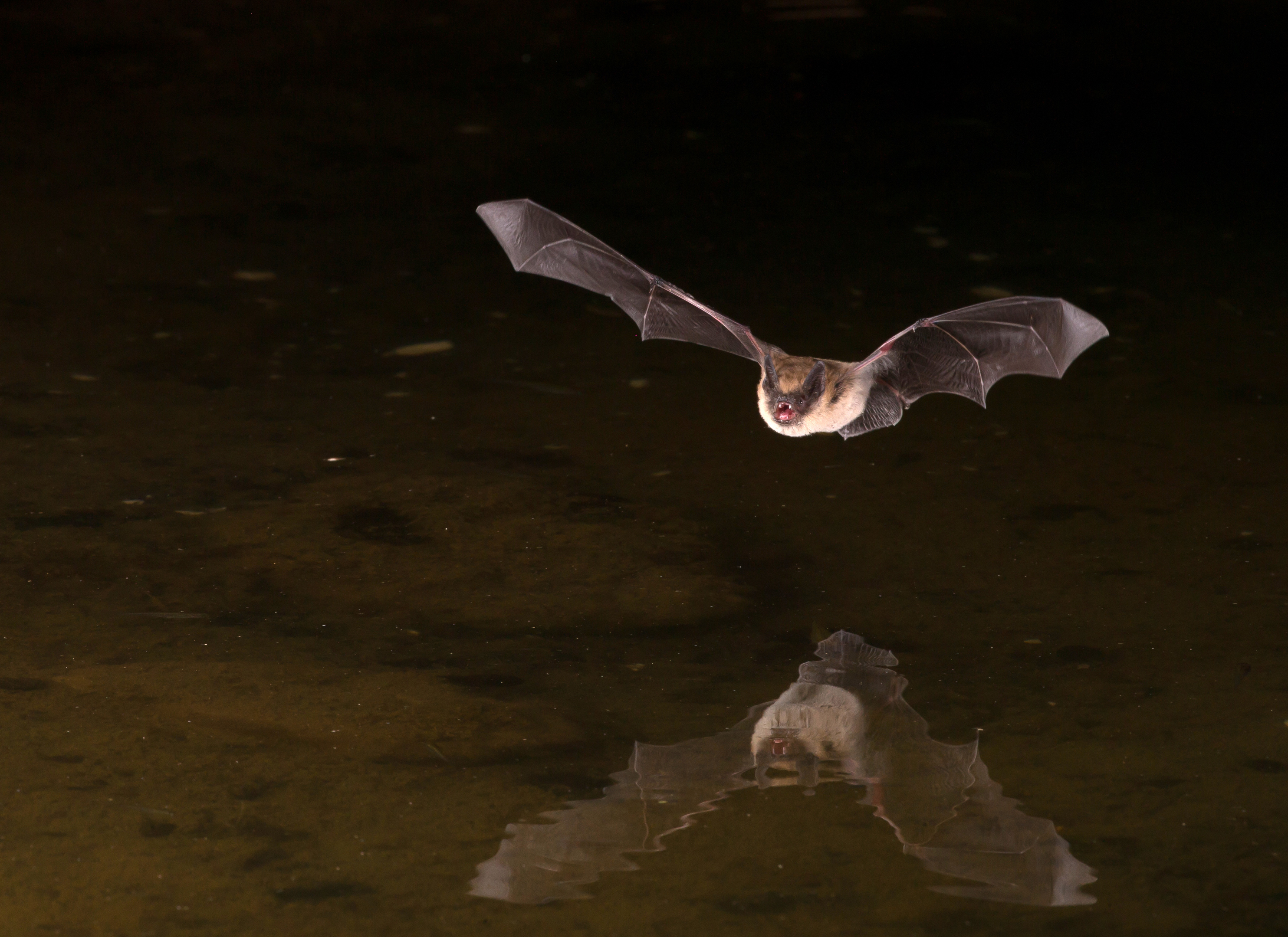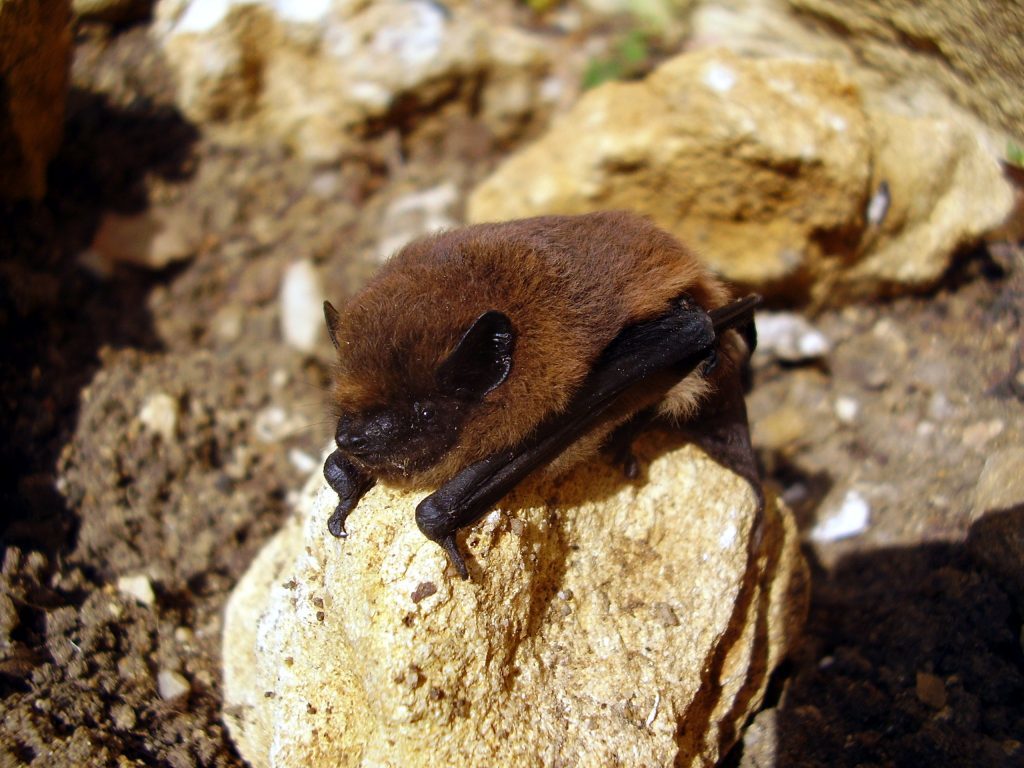Up and down, this way and that went the gloaming bats as they skimmed above the surface of the river in search of mayflies and other hatching insects.
Their frenetic aerial activity never ceases to amaze and they must be catching an awful lot of insects to compensate for the high energy expenditure involved when hawking over the water.
When I’m fly-fishing, these bats often brush my fishing line with their wings. I’m never sure if this line-touching is by accident or whether it’s a deliberate ploy to determine the nature of this strange new addition to their environment.
But I wasn’t angling this evening. Instead I had ventured down to the river to identify the various bat species around. I was armed with a bat detector, a small electronic device that detects the frequency of their ultrasonic echolocation calls. Different species typically have their own distinctive ultrasonic frequency ranges, and from this, one can with reasonable accuracy determine the species.
Daubenton’s bats, which favour waterside locations, have a peak call frequency of 45 kHz, and sure enough when I turned the detector dial to 45 I could hear through my earphones their ultrasonic echolocating clicks. As luck would have it, common pipistrelles also call at 45 kHz, but the behaviour of these bats was enough to convince me they were Daubenton’s because of the way they were hunting close to the water surface.
I wandered up a nearby track where in the fading light I saw several more small bats flickering above a line of hawthorns. Pipistrelles most likely. I turned on the detector, there was nothing at 45 kHz, the frequency of the common pipistrelle, but when I tuned to 55 kHz, my earphones filled with more chattering clicks. They were soprano pipistrelles, so similar to the common variant that only in recent times have they been differentiated as distinct species. And one way of telling them apart is through their call frequencies.
I am intrigued at how such subtle differences could have ever evolved. Or in crude terms, why two species, when one would do? Apparently, while both take a wide range of insects such as flies and midges, sopranos eat mainly those types associated with water. In other words, the two bats occupy slightly different ecological niches.
The following evening I ventured down to the wood behind my house. I heard nothing at first, but it wasn’t too long before my earphones picked up faint bat calls.
I crossed a burn. The clicks were now much louder and above me circled two bats coming in at 55 kHz – sopranos again. I like to know what things are and was now content in the knowledge that my local wood was home to soprano pipistrelles – not really a topic for dinner party conversation I know, but at least my peculiar craving for identifying all things natural had been satisfied.
Info
Bats use echolocation to enable them to navigate and hunt night-time flying insects, much in the same manner as a warship seeking out a submarine. Scotland has nine breeding species of bat.











